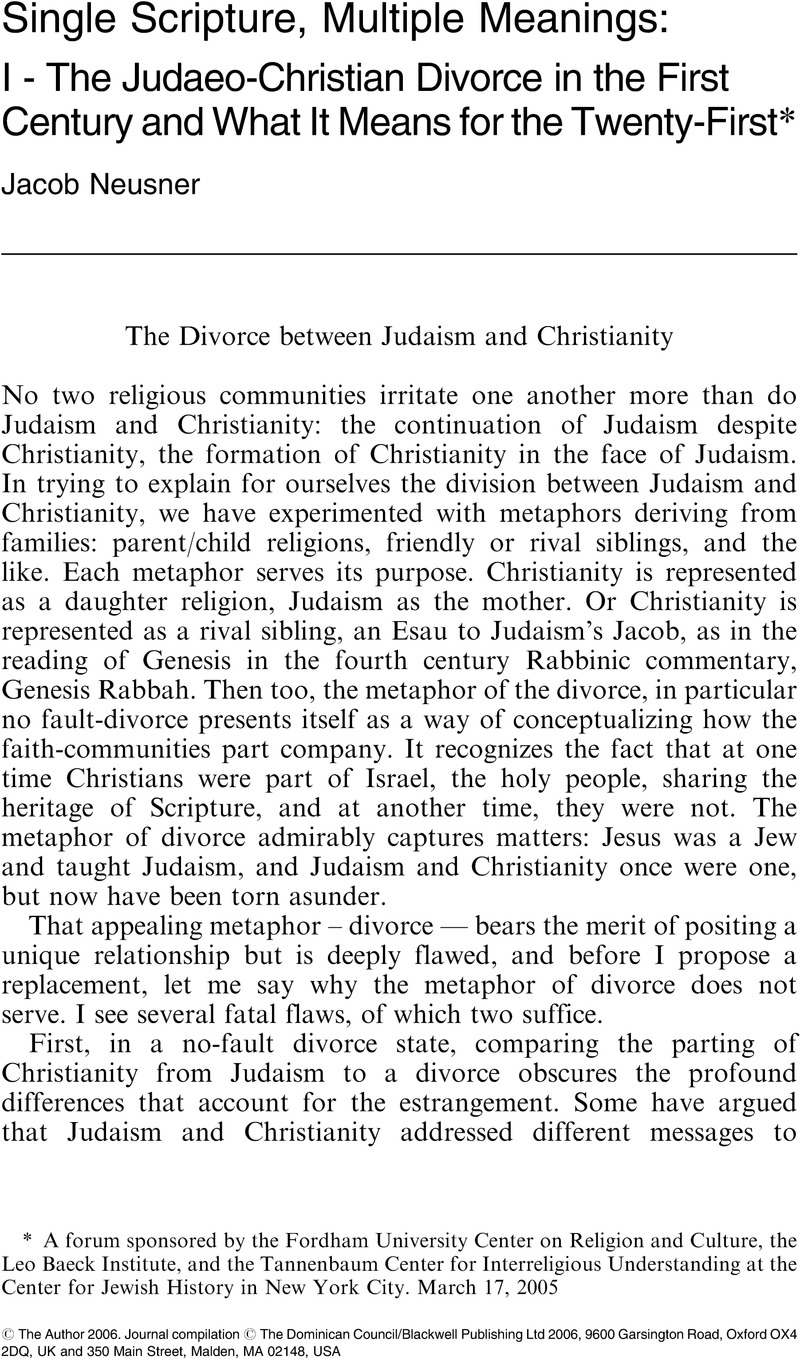No CrossRef data available.
Single Scripture, Multiple Meanings:I - The Judaeo-Christian Divorce in the First Century and What It Means for the Twenty-First
Published online by Cambridge University Press: 01 January 2024
Abstract
An abstract is not available for this content so a preview has been provided. Please use the Get access link above for information on how to access this content.

- Type
- Original Articles
- Information
- Copyright
- © The Author 2006. Journal compilation © The Dominican Council/Blackwell Publishing Ltd 2006, 9600 Garsington Road, Oxford OX4 2DQ, UK and 350 Main Street, Malden, MA 02148, USA
Footnotes
*
A forum sponsored by the Fordham University Center on Religion and Culture, the Leo Baeck Institute, and the Tannenbaum Center for Interreligious Understanding at the Center for Jewish History in New York City. March 17, 2005


